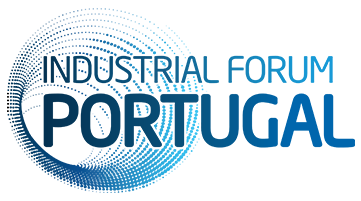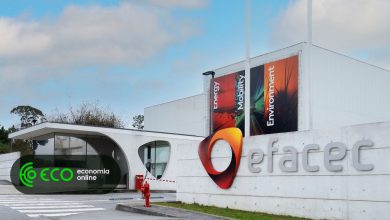Automotive Plastics: World Market Overview & Outlook 2020-2027
The “Automotive Plastics Market Size, Share & Trends Analysis Report by Product (PP, ABS, PU, PE, PC, PA, PVC, PMMA), by Application (Powertrain, Interior/Exterior Furnishings, Electrical Components), by Region, and Segment Forecasts, 2020 – 2027” report has been added to ResearchAndMarkets.com’s offering.
The global automotive plastics market size is expected to reach USD 83.9 billion by 2027. It is projected to expand at a revenue-based CAGR of 11.1% over the forecast period.
Rising preference for high-performance plastics to substitute conventional metals and rubber is expected to impel market growth. Superior properties, such as versatility and flexibility, of plastic materials have fostered innovations, in terms of technologies and designs. However, the quality of plastics is highly dependent on their properties, functions, and applications. Streamlined mass production has enabled provision of technologically sound and cost-efficient products with high sustainability.
Utilization of polymer matrix and carbon fiber composites helps reduce the overall weight of vehicles by 25 to 75%. These composites are essential for emission reduction and fuel conservation while supporting the additional weight of advanced safety equipment. Stringent regulations, such as the Corporate Average Fuel Economy (CAFE) in North America, have compelled automobile Original Equipment Manufacturers (OEMs) to seek alternative methods for reducing vehicle weight to improve efficiency.
The polyurethane product segment is anticipated to witness a significant growth owing to its ability to infuse the characteristics of both plastics and rubber at a lower weight compared to metal and other plastic materials. Increasing product demand from the automotive industry for use in refrigeration insulation, interior trims, and seat cushioning has greatly influenced segment growth over the past few years. This is expected to continue over the forecast period.
Demand for automotive plastics in Asia-Pacific is expected to witness the fastest CAGR during the forecast period. Growing automotive industry coupled with rising population and increasing disposable income of middle-class families in the emerging economies of the region is likely to be the primary driving factor in coming years. Moreover, strong government support and initiatives and increasing investment by government are also propelling the growth of automotive industry in the region, which, in turn, is anticipated to fuel demand for product in Asia-Pacific.
Further key findings from the report suggest:
- PVC is expected to be the fastest growing product segment of the automotive plastics market over the forecast period.
- The interior furnishing application segment dominated the market during the forecast period from 2020 to 2027.
- Various strategic initiatives were recorded over the past few years in order to boost the growth of the market. For instance, in May 2019, Covestro AG announced its plan to expand the production capacity of polycarbonate films at its Dormagen site in Germany. The site, which is expected to come on-stream by the end of 2020, will manufacture PC films for applications such as automotive interiors, security cards, medical devices, and automotive displays.
- Asia-Pacific was estimated as the largest market in 2019, owing to the increasing demand for vehicle branding coupled with rising number of heavy-duty vehicle sales in the region.
Key Topics Covered
Chapter 1 Methodology and Scope
Chapter 2 Executive Summary
2.1 Market Snapshot
2.2 Segmental Outlook
2.3 Competitive Insights
Chapter 3 Automotive Plastics Market Variables, Trends, & Scope
3.1 Market Lineage Outlook
3.1.1 Global Plastics Market Outlook
3.1.2 Global Automotive Plastics Market Outlook
3.2 Penetration & Growth Prospect Mapping
3.3 Industry Value Chain Analysis
3.3.1 Raw Material Trends
3.3.2 Manufacturing Trends
3.3.2.1 Injection Molding
3.3.2.2 Extrusion
3.3.3 Sales Channel Analysis
3.3.4 List of Key End-users by Region/by Product/by Country
3.4 Regulatory Framework
3.5 Market Dynamics
3.5.1 Market Driver Analysis
3.5.1.1 Increasing demand for lightweight vehicles
3.5.1.2 Improvement in recycling process
3.5.1.3 Abundant raw material availability in the Middle Eastern countries
3.5.2 Market restraint Analysis
3.5.2.1 Volatile raw material prices
3.5.2.2 Growing environmental concerns
3.6 Business Environment Analysis: Automotive Plastics Market
3.6.1 Porters five forces analysis
3.6.2 PESTEL analysis
3.6.3 Major Deals & Strategic Alliances Analysis
Chapter 4 Automotive Plastics Market: Product Estimates & Trend Analysis
4.1 Automotive Plastics Market: Product movement analysis, 2019 & 2027
4.2 Acrylonitrile butadiene styrene (ABS)
4.3 Polypropylene (PP)
4.4 Polyurethane (PU)
4.5 Polyvinyl chloride (PVC)
4.6 Polyethylene (PE)
4.7 Polycarbonate (PC)
4.8 Polymethyl methacrylate (PMMA)
4.9 Polyamide (PA)
4.10 Others
Chapter 5 Automotive Plastics Market: Application Estimates & Trend Analysis
5.1 Automotive Plastics Market: Application movement analysis, 2019 & 2027
5.2 Powertrain
5.3 Electrical components
5.4 Interior furnishings
5.5 Exterior furnishings
5.6 Under-the-hood components
5.7 Chassis
Chapter 6 Automotive Plastics Market: Regional Estimates & Trend Analysis
6.1 Regional Movement Analysis & Market Share, 2019 & 2027
6.2 North America
6.3 U.S.
6.4 Canada
6.5 Mexico
6.6 Europe
6.7 Germany
6.8 U.K.
6.9 France
6.10 Italy
6.11 Asia-Pacific
6.12 China
6.13 India
6.14 Japan
6.15 Southeast Asia
6.16 Central & South America
6.17 Brazil
6.18 Middle East & Africa
Chapter 7 Competitive Landscape
7.1 Key global players along with the recent developments & their impact on the industry
7.2 Key Company/Competition Categorization
7.3 Vendor Landscape
7.4 Public companies
7.5 Market Differentiators
7.6 Synergy Analysis: Major Deals & Strategic Alliances
7.7 Private Companies
Chapter 8 Company Profiles
8.1 AkzoNobel N.V.
8.2 BASF SE
8.3 Covestro AG
8.4 Evonik Industries AG
8.5 Adient plc (Spin-Off from Johnson Control International plc)
8.6 Magna International Inc.
8.7 Momentive Performance Materials Inc.
8.8 SABIC
8.9 Dow Chemical Company
8.10 Borealis AG
8.11 Hanwha Azdel Inc.
8.12 Grupo Antolin
8.13 Lear Corporation
8.14 Owens Corning
8.15 Quadrant AG
8.16 Royal DSM N.V.
8.17 Teijin Limited
Font: Globe News wire





